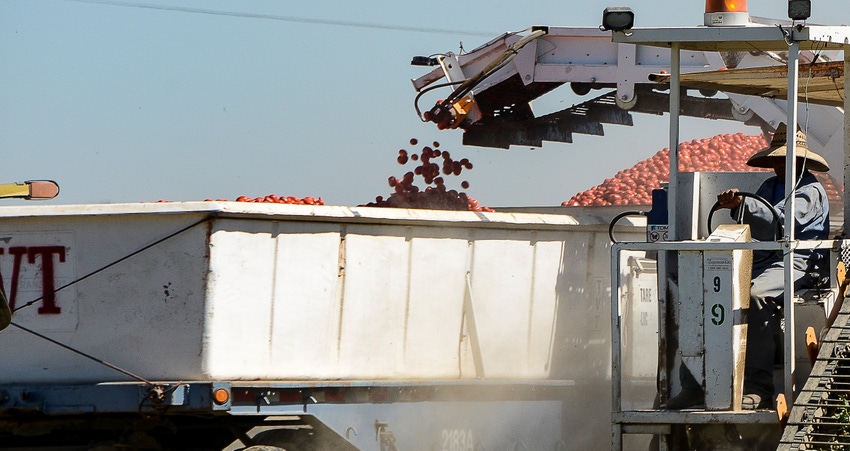
Will the record price canning tomato processors agreed to for California’s 2023 crop be enough to coax Pima cotton growers to rotate back to tomatoes?
Canning tomatoes and Pima cotton have been common rotational crops for California farmers seeking to diversify their portfolios, which is heavily reliant on permanent crops.
Word on the streets is the tomato canneries are short on supply, hence the significant hike in the contract price over the past two years. In 2020 canneries paid a base contract price of $78.50 per ton. They raised that to $105 per ton last year and agreed again to a 31% hike this year to $138.
Pima cotton prices exploded in the same period – up from about $1.25 per pound in 2020 to $3.50 last year. The January Far East US Pima Grade 2 quote was $2.75.
That drop in the Pima price comes at the same time the USDA shows Pima production from last year’s crop at 474,000 bales. This is up from the 332,000 bales of Pima produced in 2021, and almost 70,000 bales higher than was projected by the USDA last August, according to numbers shared at the Supima meeting last August.
Why do I talk about these two crops? Because they’re common rotational crops, and California farmers may be looking to reduce their permanent crop holdings due to inconsistent irrigation water allocations.
As almond prices remain abysmally low, growers removing those orchards are no longer quick to replant to almonds. Some seem to have transitioned to pistachios – a more drought tolerant tree crop that still enjoys relatively good prices, while others began to think that cotton might be the way to go if Pima prices hold. Who’d have thought 5-10 years ago that Pima cotton would be the preferred cash crop to almonds?
Canning tomatoes are more costly to produce than Pima. Their susceptibility to pest and disease pressure continues to drag the statewide yield average down as acreage reductions further reduce cannery supplies.
One Pima cotton farmer I spoke with at the Supima meeting last August said he wouldn’t consider tomatoes unless they surpassed $140 per ton, or the Pima price fell out from under him.
Don Cameron, a diversified grower in Fresno County, gave up on cotton years ago and hasn’t switched back. He still grows over 2,000 acres of conventional and organic tomatoes. As of late January, the contracted price for organic tomatoes was not set.
Mike Montna, CEO of the California Tomato Growers Association, watched tomato yields rise to over 50 tons per acre in 2018 as most of the industry moved to adopt drip irrigation in their tomato fields. Since then, the statewide average yield has fallen about five tons per acre for reasons that include weather, disease and pest pressure. At the same time, fewer acres of tomatoes were produced, leaving the canneries shorter on the supply they came to trust.
Read more about:
TomatoesAbout the Author(s)
You May Also Like






